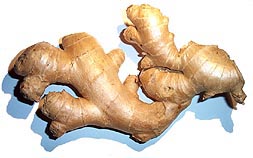Rhizome stands for "Resource-based Health Information Zone for the Mobile Enterprise"... the name is intended to be tongue in cheek, and the "R" could stand for REST, "E" for Exchange... but there is a buried meaning here as well: a rhizome like ginger or bamboo is diageotropic, meaning that it grows laterally; and the Rhizome application by design supports concepts like cross-jurisdictional exchange because it is resource- and scheme-based. It goes lateral.
In order to succeed in the enterprise, mobile exchange needs to be built on resource-based open web standards, which support making cross-jurisdictional data exchange work. This doesn't mean that the comprehensive approach taken by HL7 v3 is wrong, but we also need to support less complicated protocols like JSON and REST, using an agile approach towards content creation, consumption, collaboration and curation. Examples of this are projects like GreenCDA, HL7 FHIR and Open-XDX. Rhizome is an example of this also.
French literary theorists Gilles Deleuze and Felix Guattari introduce their A Thousand Plateaus by outlining the concept of the rhizome (quoted from A Thousand Plateaus):
- 1 and 2: Principles of connection and heterogeneity: any point of a rhizome can be connected to any other, and must be
- 3. Principle of multiplicity: only when the multiple is effectively treated as a substantive, "multiplicity" that it ceases to have any relation to the One
- 4. Principle of asignifying rupture: a rhizome may be broken, but it will start up again on one of its old lines, or on new lines
- 5 and 6: Principle of cartography and decalcomania: a rhizome is not amenable to any structural or generative model; it is a "map and not a tracing"




No comments:
Post a Comment